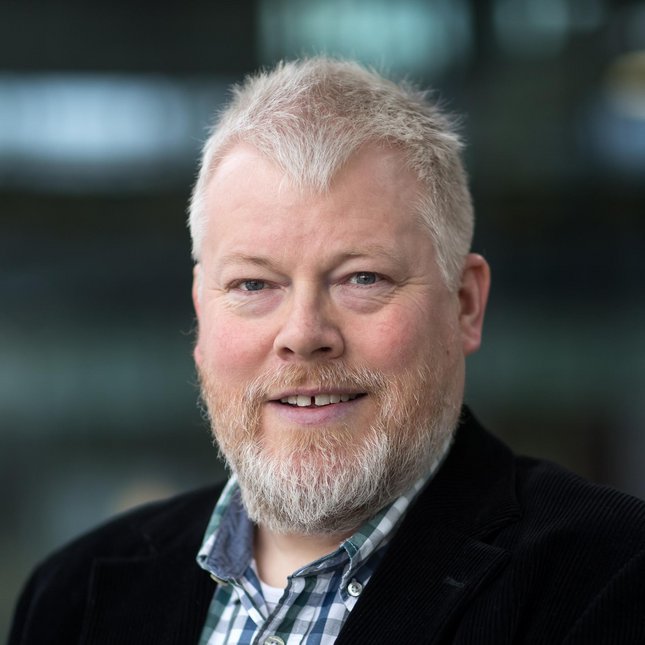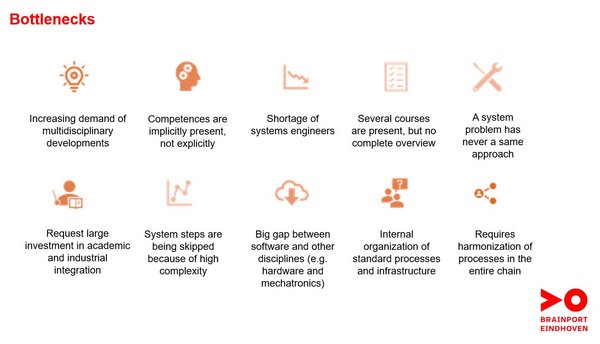Ton Peijnenburg, Fellow TU/e HTSC and Deputy director VDL ETG (March 2020)
Embedding Systems Engineering and systems thinking in our education
Systems thinking is what we want to better embed in the education of tomorrow’s engineers, systems engineers, architects and researchers. If we do not analyze our problems in the proper system context, we’ll likely design suboptimal or even irrelevant solutions. If we don’t work in multidisciplinary teams, we won’t achieve the effectiveness we need. If we don’t apply sound systems engineering principles, efficiency will suffer.
At the High Tech Systems Center, we also work from these days home. For very good reasons and in line with current guidelines and regulations, we postponed our Research Meet on Systems Engineering for high-tech equipment. We will put it on our event calendar as soon as circumstances again allow, since the topic is highly relevant.
Study tour and follow-up in Brainport
Last year November, a delegation led by Brainport Development with people from Holland Innovative, TNO ESI and TU/e have visited the University of Waterloo (Ontario, Canada), MIT and Stevens Institute of Technology (Hoboken, New Jersey). The objective of the study trip was to learn more about how these universities teach Systems Engineering (SE) and systems thinking in their systems engineering programs. Every delegation member had specific ties to one of these universities and that is how we selected our visits. The key findings are as follows:
- Students learn to design solutions for complex challenges
- Engineering design program spans entire curriculum with courses each year (“spine”)
- Domain specific specialization for graduate courses (e.g. healthcare, aerospace)
- Five to ten years of industrial experience required for graduate programs
- Graduate programs are available for continuing education
- Programs make extensive use of assignments in industry
- Engineering courses are taught by teachers from industry

Recently, we have discussed our findings with a small group of professionals from Brainport. We have identified challenges that are specific for our high-tech equipment activities, about learnings from our study trip and also identified more experience that is available from local specialists in the field. After discussing local flavors like the difference between systems engineers and systems architects, we agreed on a set of challenges that companies face and can likely be solved by better systems engineering. In a next session, we will discuss in more detail and try to be more specific about what we believe educational institutes can and should include in their training of future engineers and future systems engineers.
In case you are interested in contributing to these discussions, please get in touch with me at TU/e HTSC.
SE EDUCATION AT TU/E
At TU/e we have been taking steps to define the outline of training in systems engineering and systems thinking for all programs, including undergraduate, graduate, PDEng and PhD programs. Discussions on this topic are facilitated by the TU/e office for educational policy together with the educational directors for the various programs. From HTSC, we contribute by formulating educational targets based on our industrial experience and needs we have identified in our companies and our network. Discussions, like the ones initiated by Brainport Development as mentioned before, help to more accurately define industrial needs for skills of future engineers.
"We contribute by formulating educational targets based on our industrial experience and needs we have identified in our companies and our network"
Our region is world-class in the multidisciplinary development and manufacturing of state-of-the-art, high-tech equipment. Development of the equipment is done in highly multidisciplinary teams using proven but implicit systems engineering processes. Because of the implicit nature, it is difficult to train students in these processes, let alone research these processes to further improve them. Hence the paradoxical situation that despite us being world-class, we don’t have programs in systems engineering for high-tech equipment at our universities. This we want to change.
At HTSC, we are very much charmed by the concept of having a core of recurring courses aimed at engineering and design (a spine as it is called at Stevens), including concepts of systems engineering and training of skills in systems thinking. An analysis of all courses at TU/e has revealed relevant courses for the topic of design engineering and systems engineering. This is good news, since conceptually a spine can be built using existing courses. However, not all of the courses work from the same basic concepts for systems engineering and there is a large overlap in topics being taught, such as SysML. Based on two existing courses that are close to the domain of high-tech equipment, we propose to make a start with a program for systems engineering specifically aimed at “our” domain. We can count on company interest and support, and we hope to make steps soon.
